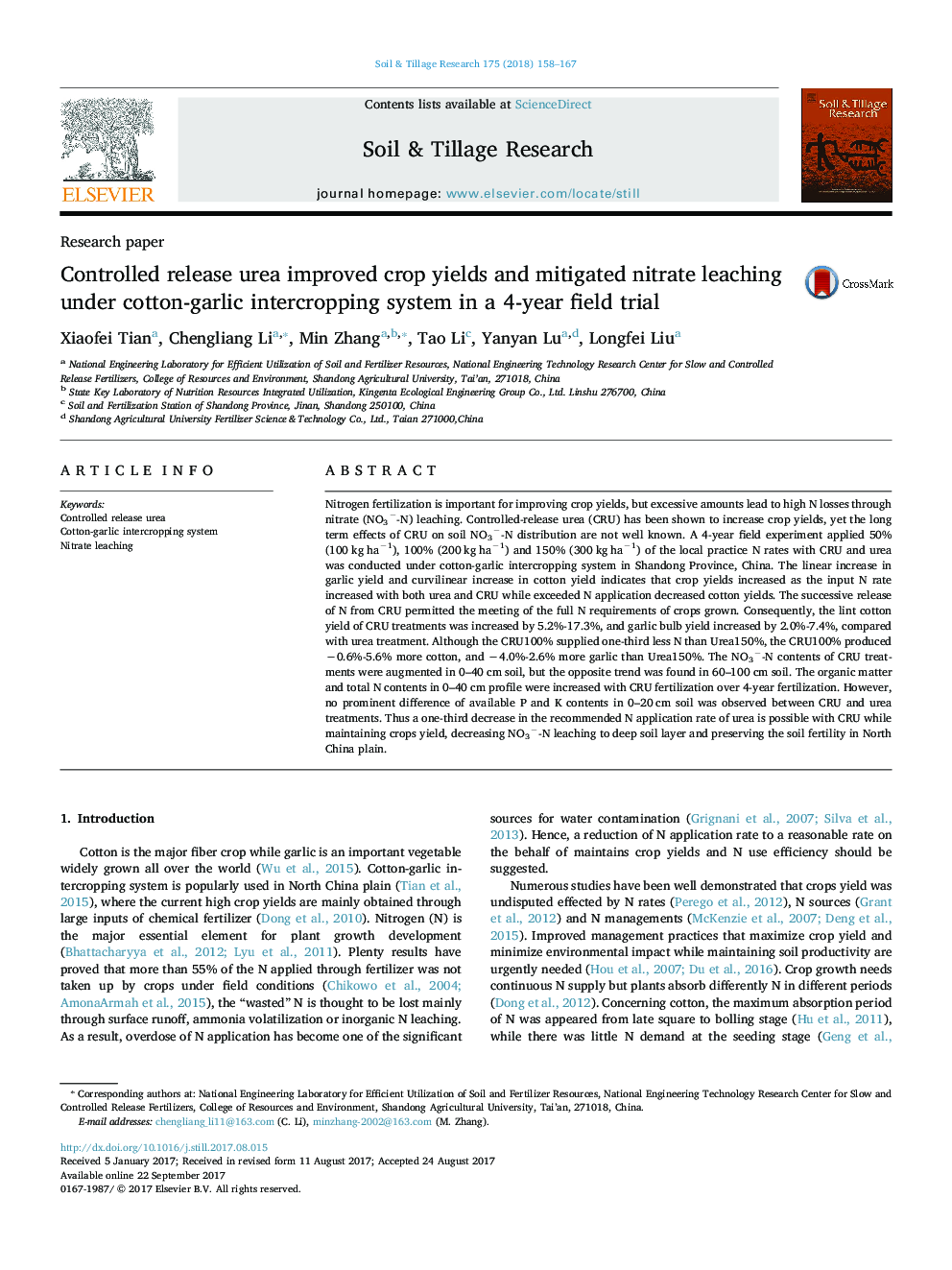| کد مقاله | کد نشریه | سال انتشار | مقاله انگلیسی | نسخه تمام متن |
|---|---|---|---|---|
| 4927430 | 1431828 | 2018 | 10 صفحه PDF | دانلود رایگان |
- A one-third decrease of controlled release urea maintains cotton yield in a 4-year field trail compared with urea.
- Controlled release urea outperformed granular urea fertilizer in decreasing NO3â-N leaching to deep soil layer.
- Four-years CRU fertilization with one-third less applied rate preserved the soil fertility.
Nitrogen fertilization is important for improving crop yields, but excessive amounts lead to high N losses through nitrate (NO3â-N) leaching. Controlled-release urea (CRU) has been shown to increase crop yields, yet the long term effects of CRU on soil NO3â-N distribution are not well known. A 4-year field experiment applied 50% (100 kg haâ1), 100% (200 kg haâ1) and 150% (300 kg haâ1) of the local practice N rates with CRU and urea was conducted under cotton-garlic intercropping system in Shandong Province, China. The linear increase in garlic yield and curvilinear increase in cotton yield indicates that crop yields increased as the input N rate increased with both urea and CRU while exceeded N application decreased cotton yields. The successive release of N from CRU permitted the meeting of the full N requirements of crops grown. Consequently, the lint cotton yield of CRU treatments was increased by 5.2%-17.3%, and garlic bulb yield increased by 2.0%-7.4%, compared with urea treatment. Although the CRU100% supplied one-third less N than Urea150%, the CRU100% produced â0.6%-5.6% more cotton, and â4.0%-2.6% more garlic than Urea150%. The NO3â-N contents of CRU treatments were augmented in 0-40 cm soil, but the opposite trend was found in 60-100 cm soil. The organic matter and total N contents in 0-40 cm profile were increased with CRU fertilization over 4-year fertilization. However, no prominent difference of available P and K contents in 0-20 cm soil was observed between CRU and urea treatments. Thus a one-third decrease in the recommended N application rate of urea is possible with CRU while maintaining crops yield, decreasing NO3â-N leaching to deep soil layer and preserving the soil fertility in North China plain.
Journal: Soil and Tillage Research - Volume 175, January 2018, Pages 158-167
